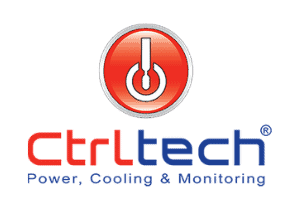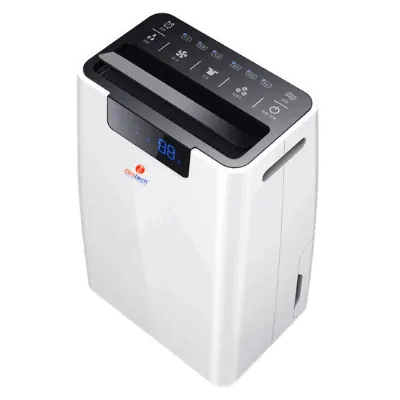Condensation dehumidifier, Dehumidifier, Desiccant dehumidifier, Refrigerant dehumidifier
Desiccant Vs. refrigerant dehumidifier.
Dehumidifiers classifieds based on their working principle, mounting, and applications. Based on working principles, dehumidifiers and classified into two types. First, the refrigerant dehumidifier, which works on condensation technique. And second is desiccant dehumidifiers that use the absorption method. Condensation dehumidifier is affordable, and it is common in use. In this article, we will discuss the differences between these types.
Area of use also helps to classify dehumidification systems. Thus, it often typed as home, swimming pool, marine, or industrial dehumidifiers. The unit can also be portable, ceiling, ducted, floor, or wall mount type based on its installation. Hence, we need to select the right type suitable for the site and application.
Table of contents
Refrigerant dehumidifier’s working principle.
The refrigerant dehumidifier consists of a compressor and coils. Humid air suck inside the dehumidifier, which passes over the cold condenser coil. Since humid air gets in touch with a very cold surface, moisture in it gets condense. Water generated in this process is then drained out or stored in a tank of the dehumidifier.
In short, this type of system works on the condensation principle. Thus, it is also mentioned as a condensation dehumidifier. Another point to note that this system removes humidity from the air in the form of physical water. Hence, it needs a drainage pipe or inbuilt tank. Also, due to the use of coils, it has a limitation on the working temperature.
Working principle of a desiccant dehumidifier.
Absorption dehumidifier consists of a desiccant wheel, motor, fans, and heater, etc. Desiccant rotor produces from silica gel, which has a natural tendency of absorbing moisture. In other words, this type of unit absorbs humidity from the air by using silica property. Hence, these units are also known as absorption dehumidifiers. Unlike a refrigerant dehumidifier, it does not have coils, which make it capable of working at low temperatures.
The desiccant rotor moves continuously with the help of a motor-belt arrangement. And, the process fan draws humidity air inside this unit. After that, humid air force to pass through the rotating desiccant wheel. During this process, wetness from the air gets absorbed by the wheel.
As a result, dry air gets generated and thrown out. But, the wheel gets wet and needs to dry to reuse. Thus, the reactivation heater passed a current of hot air through the wheel. After that, the wet reactivated air tet threw out of dehumidified space with the fan’s help.
Desiccant and refrigerant dehumidifier comparison.
As mentioned before, refrigerant dehumidifiers use coils. Thus, when it runs in a cold climate, then ice can form on its coils. So, it reduces the dehumidification capacity of the system. But, desiccant units use silica gel material to reduce moisture. Hence, the lower temperature does not affect its performance. For example, inside a cold room absorption system works better than condensation dehumidifiers.
But, for the large spaces with average temperature, the refrigerant units are more practical. It isn’t easy to design a system with large airflow required for vast areas. For instance, for a warehouse, a condensation system cheaper than an absorption.
Absorption & refrigerant dehumidifier price.
The desiccant system uses patented silica wheels. And it is manufactured by a few companies worldwide. Hence, the cost of the wheel is very high. As a consequence, absorption units are costlier than a refrigerant dehumidifier. For the same capacity, the cost of a desiccant system can be three times that of a refrigerant unit. Thus, it wise to use an absorption system where it is needed.
Operating cost of desiccant & condensation dehumidifier.
A desiccant dehumidifier consists of two fans, a motor, a heater. The heater runs continuously to dry the rotating silica gel wheel. Thus, the power need for this unit is higher. On the other hand, refrigerant dehumidifiers need minimal power. Hence, considering electricity rates, the operation cost of a refrigerant system is low.
Required humidity.
Some of the applications need ultra-low humidity. For example, glass plants need moisture less than 15% RH. Achieving such low humidity is not possible with the help of refrigerant dehumidifiers. But, the absorption system makes it easy. With this system, we can achieve the lowest humidity up to 10% RH also. Condensation dehumidifier can reduce it to a minimum of 30% RH.
Maintenance and spares.
Condensation dehumidifiers are easy to install and maintain. It is very like a normal air conditioner. Hence, any AC technician can fix and repair it. On the contrary, adsorption systems need specialized staff. Besides, its spare parts are costly and not available everywhere. But, components of refrigerant dehumidifier one can get from any local market.
The temperature of dry air.
The absorption system uses heaters and fans during the process of dehumidification. Due to this, dry air coming out of it often warm. Thus, it can increase the temperature of space by three to five degrees Celsius. Hence, it will increase the cost of cooling. And, it can become a major issue when a dehumidifier is serving a large area. Since refrigerant dehumidifier works on the condensation principle, dry air is not that hot.


